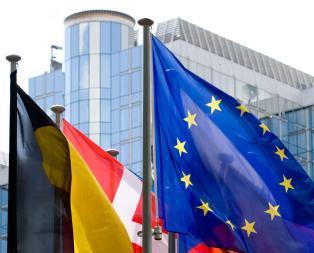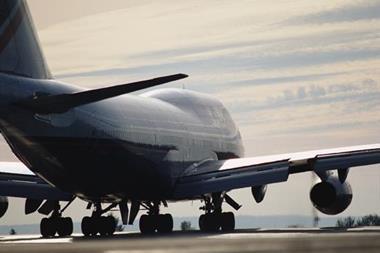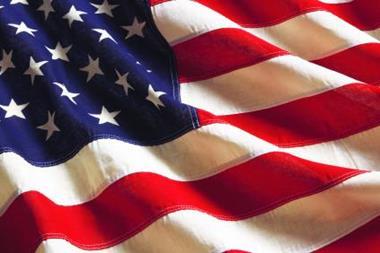Lee Coppack looks at how the UK and US giants, Tesco and Wal-Mart are reporting risk, and how their risk management translates in the real world
Before Tesco, the UK's giant supermarket chain, had even opened the doors of its first US store, it was facing the sort of comments that its even larger rival, Wal-Mart Stores, knows well. “Tesco has been especially adept at marketing itself as a socially responsible corporation. However, our examination of Tesco's track record shows significant gaps between what it has promised and how it has achieved its current position as one of the top multinational operations," said Robert Gottlieb, professor of urban environmental studies at Occidental College in California
The comment comes from a 72 page report published by Occidental in August 2007 that evaluates Tesco's entry into the US and Los Angeles. The company, not surprisingly, sought to diffuse Occidental's comments as fairly conventional Californian fare and insisted that it would be a good US corporate citizen.
Believing it can defy the bad fortunes which have afflicted most European retailers who have tried to break into the US market, Tesco plans to open a chain of new convenience stores on the Pacific coast starting in November 2007, with further expansion in future.
Tesco and Wal-Mart have grown from single shop operations to very large businesses. Wal-Mart is the largest retailer in the world, and Tesco is the fourth, with France's Carrefour and the US Home Depot sandwiched in between.
In the 2006 fiscal year, Wal-Mart had net sales of $345 bn. Tesco has a 31% share of the UK grocery business. Wal-Mart reveals that in the US alone, it spent about $200bn on merchandise in 2006. This purchasing power, plus their role as food suppliers, landowners, developers and employers, makes retail giants like these a focal point for campaigners with concerns over working conditions, the environment, human rights, nutrition and market dominance.
For example, a November 2005 documentary called the High Cost of Low Price presented an unfavourable picture of Wal-Mart's business practices, using interviews with former employees, small business owners and clips of company executives. In the UK, a network of charities, unions and pressure groups joined forces in June 2005 to launch the Tescopoly Alliance to challenge the impact of Tesco's behaviour on small business communities and the environment. Carrefour, too, has been criticised for its overseas employment practices.
Social pressures do affect the companies. For example, in its annual report for the year to 31 January 2007, Wal-Mart discloses a shelf of pending litigation over its employment practices, and, in April 2007, the Office of Fair Trading (OFT) referred Tesco's completed acquisition of a former Cooperative Group one-stop grocery to the Competition Commission, after three years of unsuccessful negotiations with the supermarket chain.
At the same time, the companies have other risks that could have a more immediate and material effect on operations and liquidity, and these have a greater impact on the share performance. How they divulge them, however, varies, as a result of different corporate governance regimes that apply in the US and Britain, and this prompts the question – which is the more effective way of giving stakeholders a good view of the risks of the business?
Wal-Mart's risk factors
Wal-Mart's annual report is comparatively short and does not discuss risk, but its 10-K annual filing to the Securities and Exchange Commission (SEC) contains more information. Although there is further detail under the headings, this type of list is fairly standardised:
n general economic factors, both domestic and international
n impediments to expansion in the US, including conversions of discount stores into supercentres
n impediments to the expansion of international operations
n failure to attract and retain qualified workers
n competition from other retailers and wholesale club operators
n risks associated with product suppliers
n overseas legislative, judicial, accounting regulatory, political and economic conditions specific to the countries or regions in which the company operates
n natural disasters and geo-political events
n legal proceedings
n failure to maintain the security of customer related information.
Tesco's risks
UK corporate governance regimes have gradually brought the issue of risk into greater prominence, and the UK Companies Act 1985 requires companies to produce an annual business review. This review must include a report on ‘the principal risks and uncertainties facing the company’.
Tesco, therefore, sets out its risks in a more discursive way in the operating and financial review of its annual report for the year to 24 February 2007 under the following categories. The categories are rather uneven, ranging as they do from very broad enterprise level risks to quite specific ones, such as:
n product safety
n business strategy which follows the wrong direction or is not efficiently communicated
n availability of funds to meet business needs, the risk of default by counter-parties to financial transactions and fluctuations in interest and foreign exchange rates
“Hurricane Katrina provided evidence of Wal-Mart's resilience
n operational threats, including economic downturn and the ability to acquire and develop property sites
n competition and consolidation
n human resources
n reputational risk
n environmental risk
n product safety
n ethical risks in the supply chain
n fraud and compliance
n IT systems and infrastructure
n regulatory and political environment
n activism and terrorism
n pensions risks
n joint venture governance and partnerships.
There are some interesting contrasts between the risk factors report by the two groups. For example, very sophisticated use of technology is widely believed to be one of the keys to Wal-Mart's success, yet the company highlights only the issue of protecting customer privacy. Tesco, however, comments on the overall importance of its IT systems, and says that any significant failure in the IT processes of its retail operations would affect its ability to trade.
Tesco concentrates on ethical risks in its supply chain, while Wal-Mart gives a more detailed account of the risks associated with its suppliers, including political and economic instability in the countries where they are located, financial instability and the availability of raw material.
Wal-Mart has little to say about risk management, other than treasury risks. It does have a senior officer, executive vice-president Linda Dillman, with responsibility for risk management and benefits administration, but turned down a request to interview her. It is possible that her risk management role is primarily for health and safety and worker's compensation.
When it comes to risk management, Tesco has much more to say. It gives some information along with the specific risk factors, for example citing succession planning under the people category and a programme of regular risk assessments and audits to monitor compliance to minimise ethical risks in the supply chain.
In a separate section, the company states that the group maintains a key risk register, determined through regular discussions with executive management and review by the full board. The register contains the key risks identified by the group including their potential severity and probability, as well as the controls and procedures implemented to mitigate the risks.
Wal-Mart does report specifically on its internal controls over financial reporting in response to the US Sarbanes-Oxley Act, and states that it has been assessed using the criteria set out by the Committee of Sponsoring Organisations (COSO) of the Treadway Commission. The company's auditor, Ernst & Young, also audits the internal controls.
Both companies provide a statement about their insurance. Wal-Mart uses a combination of insurance, self-insured retention and self-insurance for various liability risks. Tesco states that it buys commercial insurance to cover assets, earnings and liability at a catastrophe level only. It retains the residual risk through its captive insurance companies.
Wal-Mart does reveal that in 2006 it self-insured most of its exposure to windstorm, especially hurricanes, after insurers had substantially increased the premiums and restricted the conditions. The 2006 hurricane season was unexpectedly benign, and the company suffered no significant losses.
In practice
Hurricane Katrina in August 2005 provided evidence of Wal-Mart's resilience and the responsiveness of its systems, however little it says about them in its reports. Its own properties in Mississippi and Louisiana suffered serious damage, but the company showed itself quick footed and imaginative in responding to changed circumstances.
The company made very substantial donations of cash and goods, and shipped critical supplies to affected areas, often the first relief to arrive in devastated areas. Its logistics were compared favourably with those of the US Federal Emergency Management Association (FEMA).
Using its emergency operations centre, Wal-Mart was able to contact 97.7% of its 34,000 workers displaced by the storm to confirm that they were safe.
This brief comparison suggests that the UK regime is more effective in drawing out a view of the risks of the business, as perceived by the company and its directors, and the company's policies for managing them. This does not resolve the issue of how effective those policies are, which it may only be possible to judge by experience. Wal-Mart in not effusive with information, but its performance during a large and widespread disaster, suggests that there are robust policies and systems in place.
Lee Coppack edits StrategicRisk's sister publication, Catastrophe Risk Management. Email: lee.coppack@cat-risk.com



















